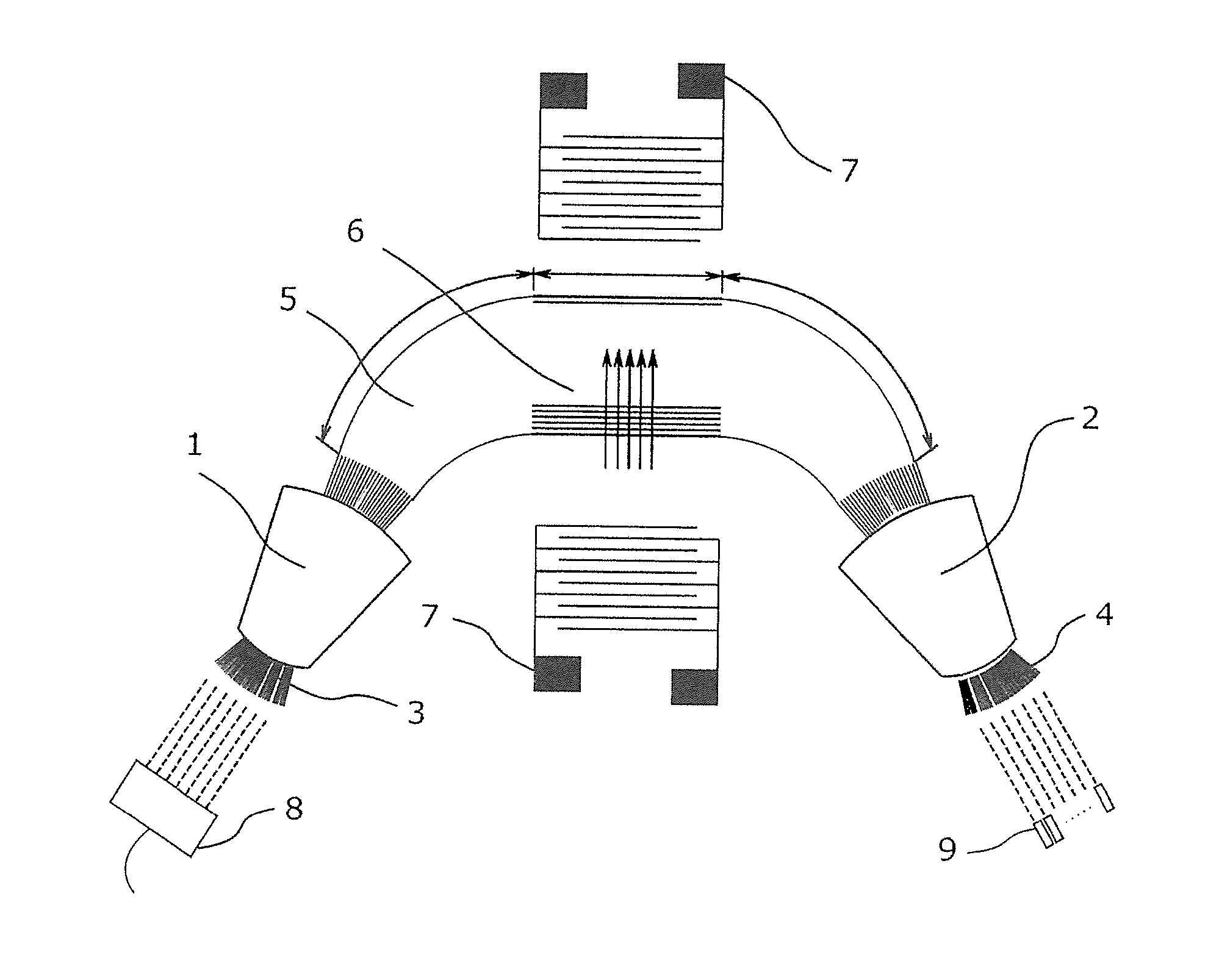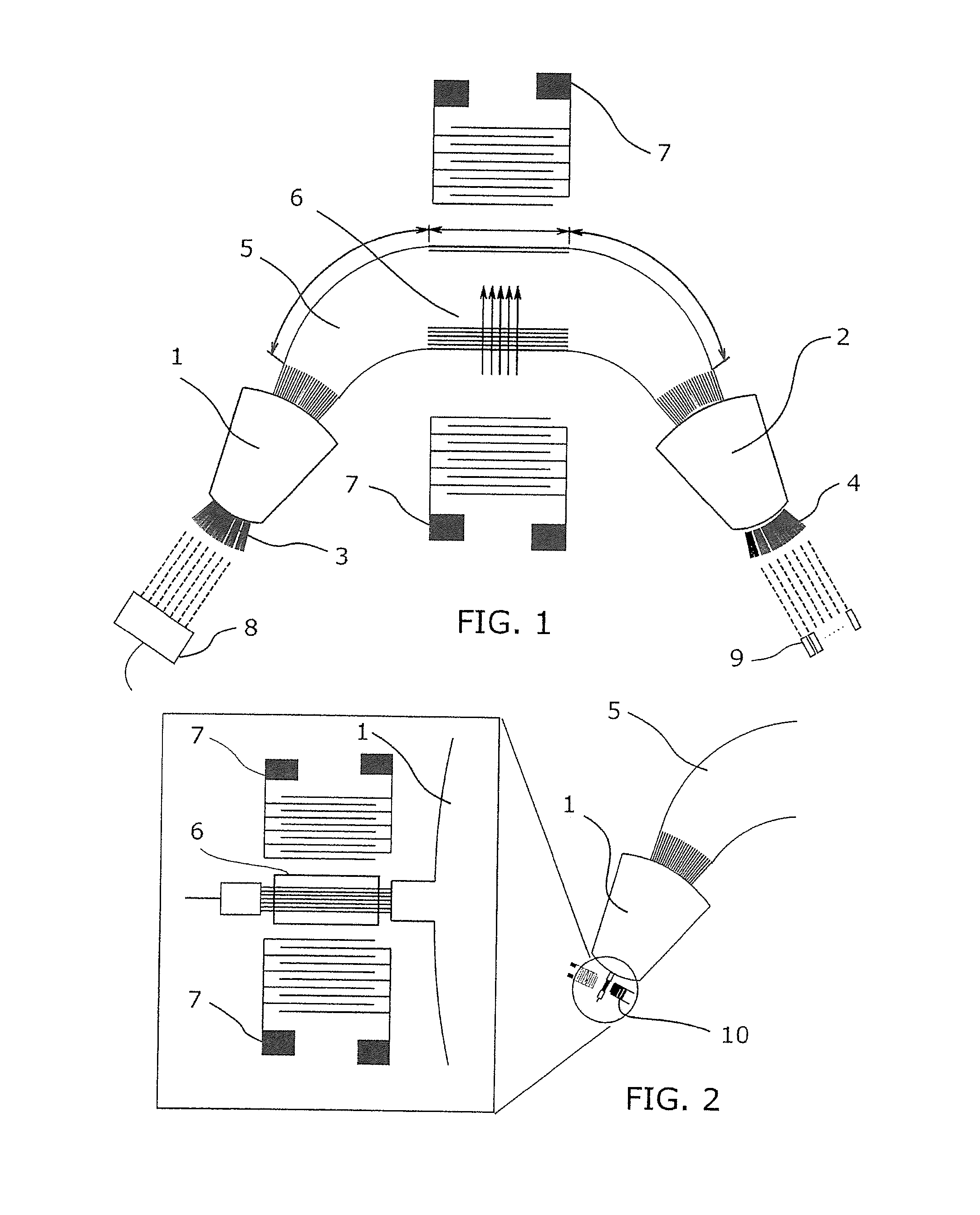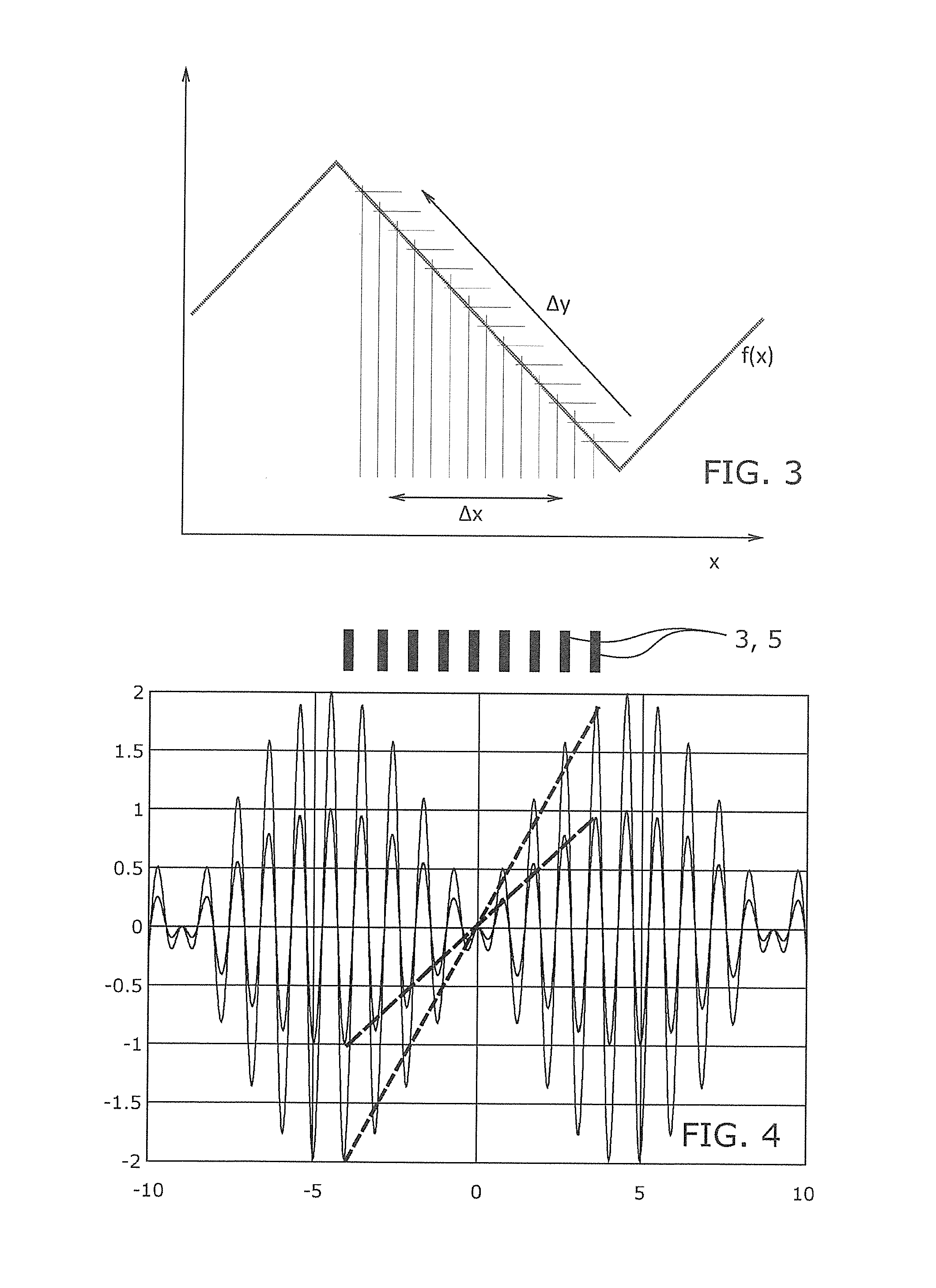Tuneable AWG device for multiplexing and demultiplexing signals and method for tuning said device
a technology of multiplexing and demultiplexing signals, applied in the direction of instruments, optical waveguide light guides, optics, etc., can solve the problems of inability to achieve immediate temperature changes, long transition time, and application itself admits that is not feasible, and patent application does not disclose a solution
- Summary
- Abstract
- Description
- Claims
- Application Information
AI Technical Summary
Benefits of technology
Problems solved by technology
Method used
Image
Examples
first embodiment
[0048]A first embodiment combines two superimposed acoustic waves with different frequencies, one multiple of the other. The sum of the two components results in a distorted wave whose overall form at the discrete points set by the optical waveguides is linearized. It is possible to use more than one mode of vibration and in particular it is possible to make use of a Fourier series expansion of a triangular function to determine the amplitudes of each of the vibration modes of the acoustic wave emitted by the transducer. The more the overlapping vibration modes, the greater is the approximation to a triangular wave with linear behaviour.
[0049]This strategy is appropriate when the acoustic wavelength is large enough such that the set of optical waveguides (i.e., the whole width of the guides) are in a section of increasing or decreasing slope of the stationary acoustic wave that excites them.
second embodiment
[0050]A second embodiment uses high frequencies, such that the acoustic wavelengths are short compared to the guide spacing. In this case at least two close frequency waves overlap, in the form sin (f0x)+sin((f0+Δf)x) with Δf the frequency difference between them. In this case the resulting wave envelope is a linearized wave at the points where the optical waveguides are found.
third embodiment
[0051]A third embodiment uses a spatial distribution of optical waveguides wherein the spacing between guides is uneven. Given a uniform sinusoidal wave expressible in the form y=sin(x) and a discretization in the variable “y”, this leads to a non-uniform distribution of the variable “x” with x=arcsin (y). Using a non-uniform distribution for waveguide separation following this strategy, that imposed by the function x=arcsin (y) wherein x is a variable discretized in accordance with a uniform grid, enables the optical guides to be excited acoustically such that the behaviour of the acoustic wave is shown (for optical waveguides) linearized. That is, if the discretized function values of this form are represented in a uniform grid, the representation of the function is linear.
[0052]An object of this invention include the particular configurations given by the dependent claims 2 to 12 which are considered included herein by reference.
[0053]Another object of this invention is an AWG de...
PUM
| Property | Measurement | Unit |
|---|---|---|
| lengths | aaaaa | aaaaa |
| surface acoustic wave transmission | aaaaa | aaaaa |
| length | aaaaa | aaaaa |
Abstract
Description
Claims
Application Information
 Login to View More
Login to View More - R&D
- Intellectual Property
- Life Sciences
- Materials
- Tech Scout
- Unparalleled Data Quality
- Higher Quality Content
- 60% Fewer Hallucinations
Browse by: Latest US Patents, China's latest patents, Technical Efficacy Thesaurus, Application Domain, Technology Topic, Popular Technical Reports.
© 2025 PatSnap. All rights reserved.Legal|Privacy policy|Modern Slavery Act Transparency Statement|Sitemap|About US| Contact US: help@patsnap.com



